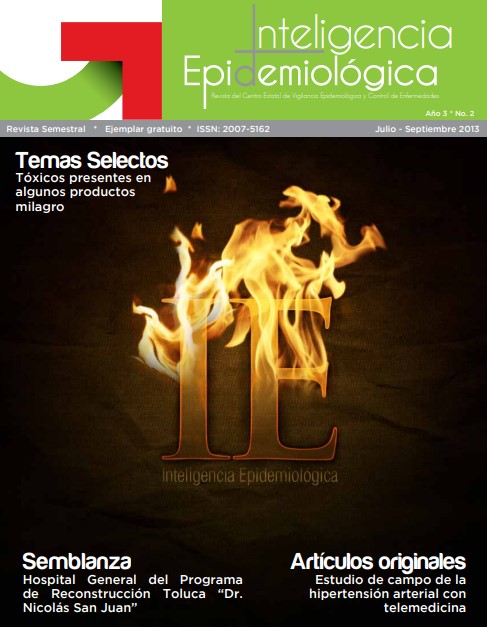PM10 Air Pollution and the Demand for Respiratory Infection Health Services in the Mexico City Metropolitan Area.
Palabras clave:
Air pollution, Respiratory infections, Particles < 10 microns, PM10, ElderlyResumen
Air pollution levels are associated with the demand for hospital appointments due to respiratory illnesses. We performed a time series study of the number of cases seeking attention in primary care units in the Mexico City Metropolitan Area from 1993-1994 to evaluate the increased demand for health services associated with air pollution levels. An additive generalized Poisson regression model was applied. taking the number of daily appointments and respiratory diagnoses as the dependent, and concentration of suspended particles smaller than 10 microns (PM10) as the independent variables. Controls accounted for the effects of ozone and nitrogen and sulfur oxides: The association was stratified for younger than 5 and older than 65 years of age. We observed a 3% increase in the number of upper respiratory infections at all ages for each 10 g/m3 increase in the average PMIO concentration (RR=1.03 IC 95% 1.007, 1.05). The associated increase was 11% for both the population younger than 5 years of age. (RR=1.11 IC 95% 1.07, 1.15); and for the above 65 years age group (RR=1.11 IC95% 1,05, 1.16). Adjusting for the effect of ozone maintained the association for the number of upper respiratory infections with a 12% increase for both the under 5 (RR=1.12 IC95% 1.07, 1.16) and over 65 (RR= 1.12 IC95% 1.06. 1.18) age groups. These results suggest that monitoring the demand for primary level health care services among children and the elderly provides a good parameter for surveillance of the effects of PM10.
Descargas
Publicado
Número
Sección
Categorías
Licencia
Derechos de autor 2022 V. M. Torres Meza , H Gómez Dantés , M.M. Téllez Rojo , M. Castillejos , V. H. Borja Aburto

Esta obra está bajo una licencia internacional Creative Commons Atribución-NoComercial-CompartirIgual 4.0.



